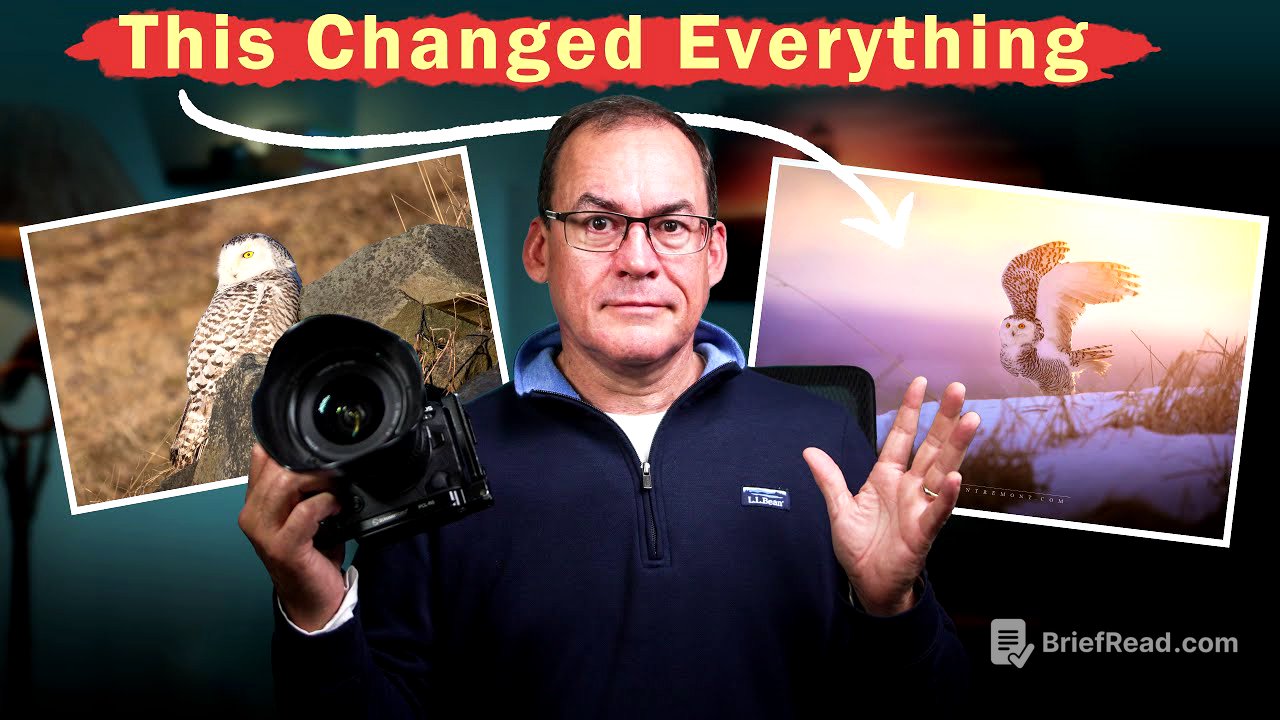TLDR;
This video explains how improving backgrounds can significantly enhance photography. It emphasizes the importance of avoiding bad backgrounds, using backgrounds to provide context and storytelling, and actively seeking out or creating desired backgrounds through adjustments in angle, perspective, and camera settings. The key takeaways include:
- Bad backgrounds detract from an image, regardless of the subject's quality.
- Good backgrounds add a sense of place and enhance storytelling.
- Adjusting your position and camera settings are crucial for achieving the desired background.
- Creating separation between the subject and background is essential for a compelling photo.
Introduction [0:05]
The video addresses the common issue of photos lacking impact despite good subjects and settings. It posits that the background is often the missing element that can significantly improve a photograph, using examples from wildlife and concert photography to illustrate the point. The presenter shares how focusing on backgrounds elevated his wildlife photography and enabled him to capture compelling images even in a new genre like concert photography.
Avoiding Bad Backgrounds [1:54]
The first step to improving photos is to avoid backgrounds that detract from the subject. Elements like branches, telephone poles, clutter, fire hydrants, and other man-made objects can ruin an otherwise good shot. The key is to adjust the angle and perspective to eliminate these distractions.
Creating a Sense of Place [2:53]
A good background provides context and tells a story about the location, scenario, time, or place. Examples include capturing musicians with the "45" in the background to signify the 45th anniversary of a concert or including mountains in photos of polar bears in Svalbard, Norway, to emphasize the location. This technique is commonly used by photojournalists to add depth and meaning to their images.
Actively Seeking the Right Background [5:30]
To get the desired background, photographers should actively look at the background as soon as they find an interesting subject. Adjusting position and timing to align the subject with the desired background elements is crucial. Visual balance between the subject and background should be considered, and photographers should experiment with foreground and background focus, as well as depth of field, to achieve the desired effect.
Distance to Background and Separation [6:53]
The distance to the background significantly affects its appearance, determining whether background elements are in focus and their relative size to the subject. Adjusting the distance to the background, either by moving the subject or oneself, can provide different perspectives. Additionally, aperture settings can be used to control background blur and separation.
Creating Separation Between Subject and Background [8:14]
A common problem is the lack of separation between the subject and background, especially when they have similar colors or brightness. To address this, photographers should seek alignments that create differences in brightness, details, colors, and tones between the subject and background. If this cannot be achieved in the field, post-processing adjustments can be made to differentiate the elements. The video concludes by encouraging viewers to move beyond taking snapshots and to actively create photos by considering and controlling the background.









